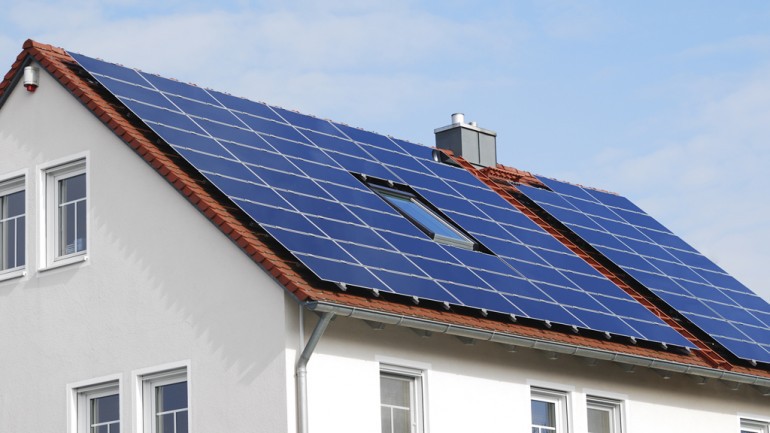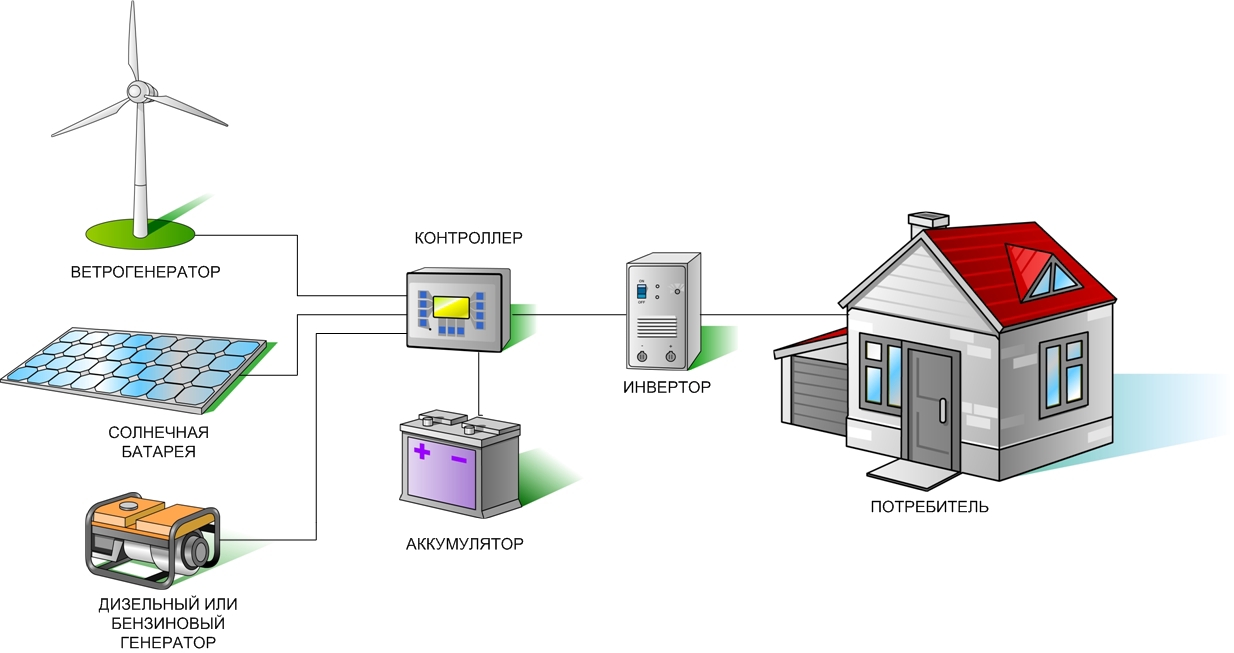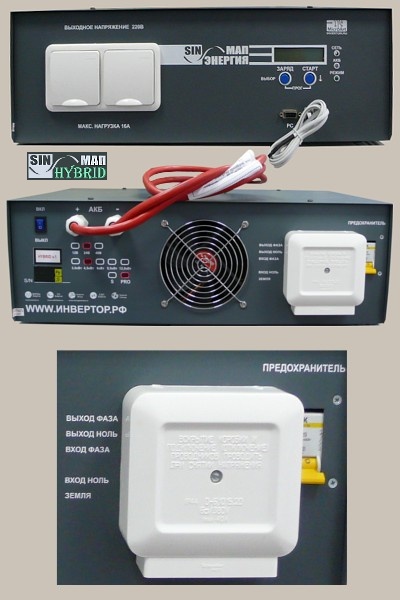Complete energy autonomy or how to survive with solar panels in the outback (part 3. transitional)
In this part, I will tell you in what way, only two years later, I forced the power grid to connect my house to the mains electricity and how I decided to save with solar panels.

')
In the first chapter I will tell you how to get the power engineers to connect your house to the network, and the second how to use the existing autonomous system together with the common network infrastructure.
Chapter 1. How to deal with the energy company
In theory, connecting to the grid is simple. In clause 3 of the Resolution of the Government of the Russian Federation No. 861 of December 27, 2004. (As amended by the Resolution of the Government of the Russian Federation of April 21, 2009 No. 334, the energy company operating in the surrounding area is obliged to conclude an agreement with you and execute it within 6 months. The cost of technological connection is 550 rubles and some nerves and the time spent on obtaining and agreeing on technical conditions. The very first advice that can be given at this stage: do not sign the contract and TU in the office. You have the right to take the documents home and study them within 7 days. Most of all, consult on specialized forums and it is quite possible that you will have to roll out a claim demanding a change in TU. Read carefully, otherwise you can sign your own obligation to put poles at your own expense, and this can be very costly.
Suppose that you have all agreed, signed the documents and began to wait. The probability that you will be connected within the specified period is directly proportional to the frequency of fines issued by the FAS and the prosecutor's office of this very energy company. Personally, I had to wait for more than two years, and I “did not understand” the hints of putting the envelope to the head of the company.
A year later, I began to act. Registered letters with a delivery receipt, in which there was a demand for connection, fell to the same place where sick boys in Sparta. Then I began to write to the FAS (Federal Antimonopoly Service) with the requirement to understand. FAS controls the work of the natural monopoly, which is the grid company (ESC). Practice has shown that the FAS can only issue a prescription, but in no way can make the ESC fulfill its duties. In this situation, the prosecutor's office may act, where I also turned. But the prosecutor's office was also not interested in my business, and they simply transferred it to the FAS. It was possible to appeal above and drop it on the prosecutor's office, but since I had to wait for a response from each state structure for 20-40 days, I decided to directly sue.
Since the fight against energy companies is a matter of protecting consumers' rights, you can file a lawsuit and not pay the bribe to the state for the consideration of the case. Here it is necessary to mention some things:
1. Conduct correspondence only by registered letters with the notification of delivery.
2. Collect all checks.
3. If you have purchased a gasoline or diesel generator and have to use it all the time, collect checks for the generator and fuel for it. To prove that a certain amount of fuel has been consumed, a generator passport should be kept for presentation in court.
4. Cases on connections are always considered in favor of the claimant, therefore all costs must be borne by the defendant.
Immediately after the trial, I began to pull the wires and quickly connect the house. Here you should know that by the time of connection you need to have a assembled shield with opening machines and a counter, as well as send a notification (by registered mail, surely) indicating that you have completed your part of the specifications and are ready to connect. The absence of such a letter may be another reason to delay the connection process.
So, after going through all the connections of the connection, the question arises: “What to do with the existing autonomous energy system?”. You can leave it as a backup, and you can start saving with the help of already purchased solar panels and / or a wind turbine.
Chapter 2. Building a hybrid system or using solar energy as efficiently as possible.
The first thought was to hang a separate load in the form of a boiler on the existing inverter, which would supply energy and heat the water as the sun arrived. There are two minuses to this solution: there is no water heating, when there is no sun and we do not consume the energy of the sun when the water is heated. And if the second option can still be experienced by strangling your own toad, then being under a shower of ice water when there is electricity in the house is doubly offensive.
And if earlier the electrical circuit of autonomous power supply looked like this:

Now it began to look like this , and the task arose of tying together two sources of energy: alternative (sun, wind, water) and classical (electrical)

Hybrid inverter
If you look closely at the last picture, you can see that for the first time in my articles there was a mention of a hybrid inverter. Previously, companies called devices that combined a solar controller and an inverter. This is not entirely correct. The tasks of the hybrid inverter include synchronization with a common electrical network and the mixing of energy from solar panels to power from the network.
Example: a house has 1 phase and 5 kW of power. For some devices you need 7 kW of power. In case of overload, the introductory power limiter will operate. When a required hybrid inverter is introduced into this system, it will add 2 kW from the batteries and in total it will turn out 7 kW. In addition, if the inverter allows and is configured correctly, it allows the use of energy from alternative sources. That is, the house consumes 1000 watts of energy, of which 700–900 watts will come from solar panels, while the batteries do not participate in the work, which means their life remains intact. So it should work in the ideal to which we must strive. Now it is necessary to go to the choice of technology.
Import substitution or search for alternatives
My experience described here and here led me to believe that the service should be on hourly or one-day availability. If you are too lazy to read, I remind you: I purchased an inverter with a pure sine via the Internet in a German company. Given that the inverter itself is made in China, I decided to purchase in Germany in the hope of good service and a two-year warranty. Hope was justified twice, because twice I had to send an inverter to repair, which lasted from the moment the device crashed and until it was working properly for about three months. The availability of backup technology saved the situation, but I was convinced of the need for a good and affordable service if I did not want to have a double supply of equipment.
Since I finally connected to the mains electricity, the issue of utilization of energy obtained from solar panels rose with a new force. Shoveling and studying the mass of materials, I set out to get a hybrid inverter, which will mix energy from solar panels to the consumed network energy to reduce bills.
The Russian market is represented by the equipment of Chinese, American and European manufacturers. In addition, there is a technique of three Russian companies, which is represented most widely: MicroART , A-Electronics and SibContact . The last two companies appeared by dividing one, so the range of products, as well as their characteristics, is quite similar. By the way, the characteristics of the devices of these Novosibirsk companies are often ahead of the technology of Western companies. When studying the issue of the reliability of this technology, questions arose of service or repair. Here the responses of real owners are divided. Since the hybrid inverter is several times more expensive than the existing one (from 30,000 rubles and more), it was decided to rely on the reliability and availability of the service. Taking into account the fact that the company MicroART has been manufacturing inverters for autonomous systems since 2000, we can assume that the accumulated experience, multiplied by the number of devices produced, allows them to produce reliable equipment and provide decent support to users. In addition, it is a completely Russian product, which is good news.
Hybrid inverter selection
As the appetite comes with eating, so the desire to get a serious supply of energy comes during the selection of equipment. In the previous article, I wrote that I have solar cells with a maximum power of up to 800 watts. The system was assembled at 12 V, since this voltage allows you to connect a huge amount of equipment that is produced for cars. In addition, the main lighting is made of LED strips, which are also powered by 12 V. Having visited the manufacturer's website, I looked at the list of hybrid inverters . I liked this model with a power of 3 kW.

After talking with the engineers of the company MicroART, I changed my opinion about the model. This was due to several factors:
1. At this power (at a peak of up to 5000 W), there will be absolutely wild currents of 5000 W \ 12V = 416A, and at standard 3000 W - 3000 \ 12 = 250A, which is very, very much. The point is not only in the required thickness of the wires, but in the rapid deterioration of the batteries.
2. Switching to 24V will be easier, since I already had two batteries of the same capacity.
3. The currents taken from the batteries at the same power will be half as much if you switch from 12V to 24V. P = U * I
4. The choice of power inverters in MicroArt by 24V more than 12V.
Thus, I not only decided to transfer the system to 24V, but also chose a more powerful inverter in order to reserve one of the phases in my house. This will allow solar energy to be added when using household appliances, and in the event of a power outage, it will completely provide electricity for the existing load. As a result, I settled on the MAP SIN "Energy" Pro HYBRID v.1 24V model : 4.5 kW HYBRID (inverter)
Advantages of new in my energy sector:
1. The possibility of reserving a separate phase that supplies one floor of the house
2. The possibility of mixing solar energy into the power phase, thereby working to reduce the cost of mains electricity.
3. Disposal of an external charger, since the MAP HYDRID inverter from MicroART has a built-in charger
4. The possibility of charging batteries, both from the mains and from the generator, if the mains supply is completely absent, the sun has set and the batteries have given off charge.
5. Updated software for PC and mobile platforms allows, including remotely, to monitor the status of batteries and modes of operation of the hybrid inverter.
Disadvantages of new items:
1. I had to transfer the autonomous system to 24V, which means that I would have to solve the issue of powering LED lighting.
If you are interested in the practice of operating and testing a hybrid inverter, then in the following material I will write down the experience of its introduction into the existing power grid, device settings and own observations.
Source: https://habr.com/ru/post/254281/
All Articles